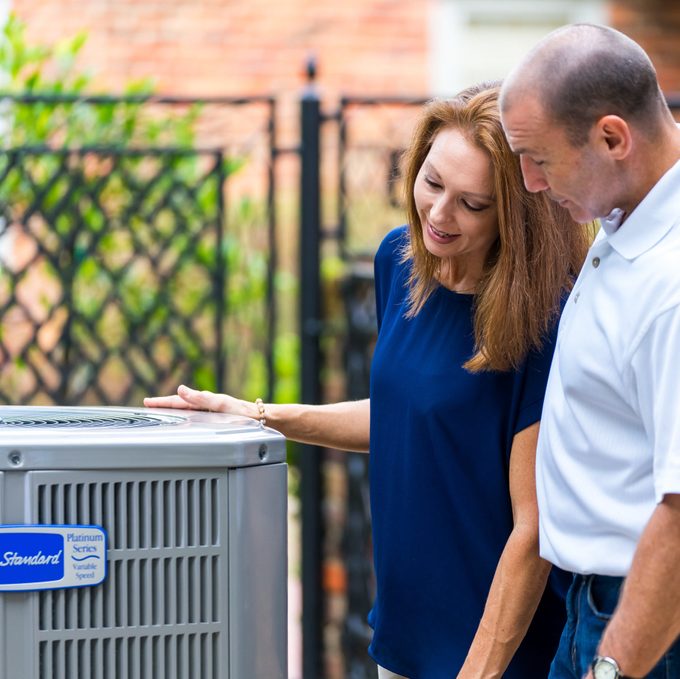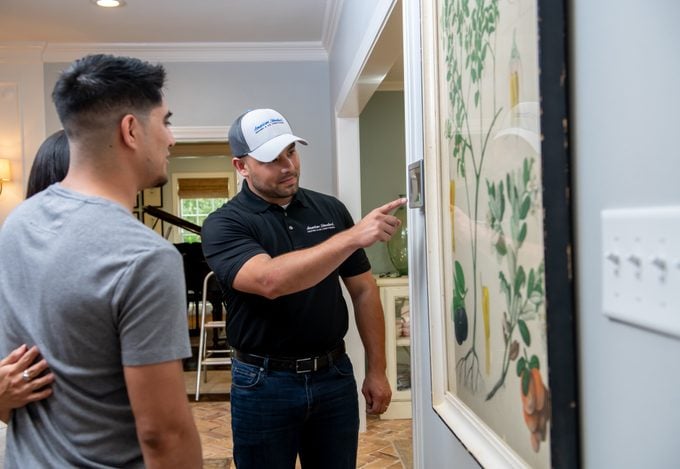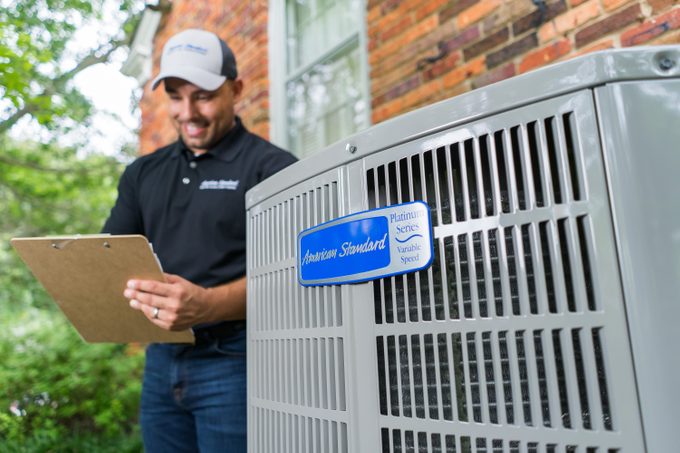Well, for starters, if you’re asking yourself what does HVAC stand for anyway, then you might need to take a quick course in Homeowning 01, which is a new website presented by American Standard Heating and Air Conditioning that curates helpful content to better equip new (and less handy) homeowners with a deeper understanding of how to care for their big investment.
Look at it this way. If you own an HVAC system, then you are a proud parent of something that will make every day at home more comfortable and enjoyable. And that comes with a little bit of responsibility. Not to worry, there are some simple things to know about HVAC systems and how to maintain, and even improve, their effectiveness.
Go beyond the instruction manual and take these easy tips to keep the heart of your home in tip-top shape.
1. Simply say “hello.”
Have you taken a look at your HVAC unit? Really gotten close to see what it is and what it does? Go ahead and break the ice. You don’t need to understand its inner workings, but you should at least make sure you know some basics: what kind of model you have (split system or hybrid system, for example), where the main switch is (usually outdoors, near the outdoor compressor unit) and where you insert the air filter. Your user’s manual can answer these questions; but, if you don’t have it, look at the make and model number on your unit and do a quick Google search or contact the manufacturer.

2. Have those filters at the ready.
It’s widely recommended to switch out your air filters at least every month, especially in the months when your HVAC unit is working its hardest (winter and summer, naturally). Make sure you’re swapping in the factory-recommended air filter sizes — if you have any doubt, just look on the side of your current filter to see the dimensions. A smaller filter may slide in just fine, but it won’t do the job; air will flow around the filter, rather than through it. And, as a result, you won’t be breathing in the cleanest air possible.

3. Understand your thermostat.
Thermostats are usually in a central location in your home and for good reason: They are the brains that keep everything ticking. There are a few different kinds of thermostats. Non-programmable ones require you to constantly adjust the thermostat to meet your temperature needs at that moment. Programmable thermostats give you the control to set your system to raise or lower the temperature to provide the most comfort while you’re home and save on energy costs when you’re not., Today, you can even find smart thermostats, like American Standard’s AccuLink™ Gold 824 Control, which allow you to adjust your home’s temperature and program it from your smart phone. Ultimately, the thermostat is just a little box on the wall that will show you the temperature indoors — but it’s important to know how the box opens (typically, it’s by unscrewing or pulling off the cover), as many thermostats require battery changes. When it comes to any wiring you see inside, leave the futzing to an expert.

Treat your vents with TLC.
Vents bring temperature-controlled air in and out of your living spaces and get dirty over time. And they won’t clean themselves. So get in the habit of giving them a quick sweeping every few weeks. A regular old broom does the trick (it’s best to sweep in the same direction that the slats face). You can also dampen a microfiber cloth and run it on top of your vents and surrounding wall or ceiling. Failing to sweep your vents means that all that dirt and debris sitting on top of them can prohibit quality air flow.
Take it a step further — clean your ducts.
This is a job for an HVAC professional, but only needs to be done occasionally. While you can see dirt buildup on your vents, there’s no telling what lies behind them deeper in the ducts. If you notice that your home is consistently dusty, or you’ve just undergone a major renovation, it could be time for a quick tune-up of your ducts. A professional will be able to assess the effectiveness of your unit and give your ducts a thorough cleaning. It’s also important to note: Air conditioners and furnaces can develop condensation, especially in humid climates, so you’ll want to catch this problem before it develops into mold growth. Mold growth on HVAC units may not be very common, but if left untreated, can make its way into your air ducts. And that’s yet another reason to stay on top of your duct game. Don’t hesitate to contact your local American Standard Customer Care Dealer to find a specialist to help maintain your system.

Find ways to save on energy.
Everyone loves to save a buck or two on their heating and cooling bill. Luckily, there are some easy ways to do it. For starters, ignore the myth that you can close your air vents to save on energy. Doing that actually has the opposite effect as it upsets the air pressure in your duct system and wastes energy. Try a really simple trick instead: close the shades and blinds in rooms where you don’t need the sunlight; direct sun exposure does quick work of heating up your home and getting that A/C blasting. Conversely, if it’s winter and you want some free heat, open up your shades and blinds and let the warmth flood in.
Being an HVAC system owner doesn’t have to be scary. Remember, your unit is working 24/7 for your well-being. And your job is simple: Give it the love it deserves. And, if ever you do need a bit of extra troubleshooting, there are always professionals to help.
